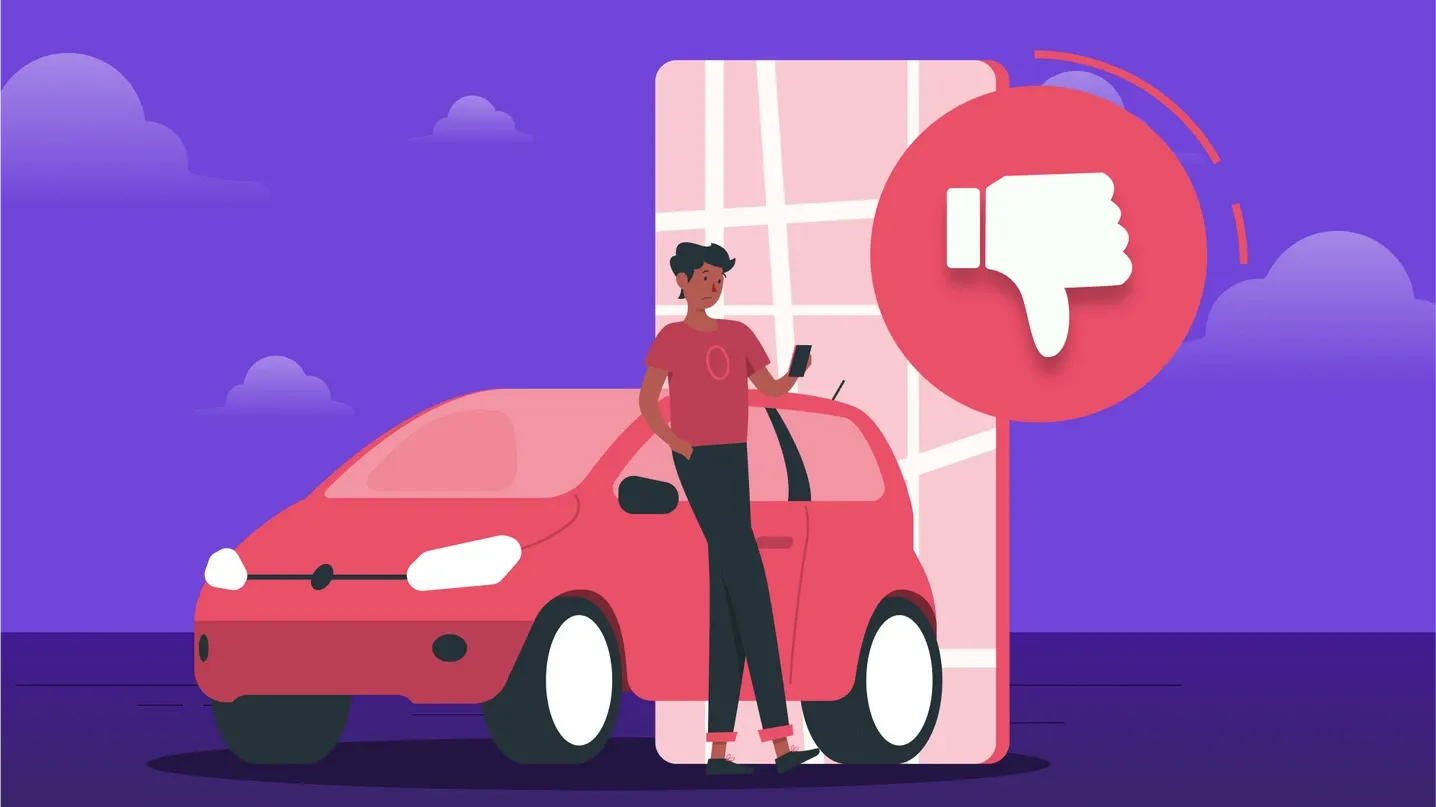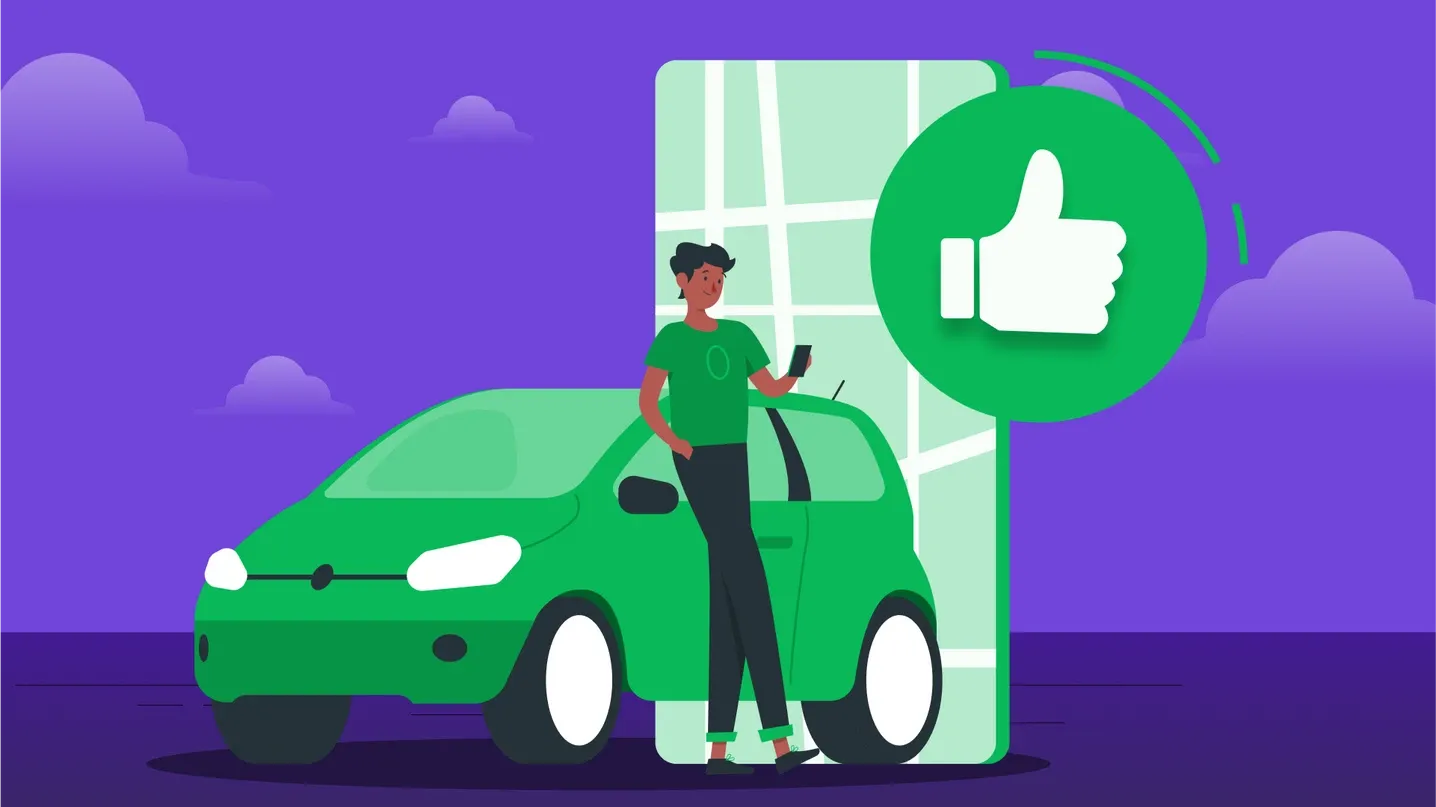Understanding the drivers: likes, dislikes, behavior, and preferences
Drivers are the heart and soul of every ride-hailing company. They are the only ones who have direct interaction with both the company and its customers. Yet, there is little discussion on what drives the drivers (pun intended). Companies don’t always know how drivers make decisions, how they behave, what problems they face, and what they value when working for a ride-hailing company. In this article, we took the existing research - a qualitative analysis of ride-hailing drivers in the Netherlands - and tried to answer these questions.

Why is it important to understand the drivers?
The ride-hailing industry depends on several groups of people: riders, drivers, the platform, policymakers, and the general public. With the number of ride-hailing platforms growing, the general public getting more used to ordering cars with the app, and policymakers trying to make it fair for everyone, it is more important than ever to manage relationships with the drivers. This means making sure they are happy and motivated, and they understand the company’s policies and limits to what the company can offer.
In addition to that, ride-hailing drivers are also often the owners of their cars. Their decisions affect the business in every possible way.
Why do drivers join the ride-hailing platform?
In a study conducted in the US in 2020, the researchers discovered that since the introduction of Uber the hourly income of for-hire vehicle drivers has decreased. Yet, there is no shortage of drivers. This is because of the two overwhelming benefits of the job: flexibility and freedom.
When asked what the drivers find most attractive about working in a ride-hailing business, most of them talk about flexibility, freedom, and independence. A lot of people despise the very concept of working for someone else. They value the opportunity to start and end a working day whenever they feel like it and never have to explain themselves. Here’s a quote from one of the drivers from the study:
“You decide about your own working time. You decide if you are going to work at all or not. I don't have to call someone if I am not going to work … You get everything in control… It doesn't matter where you are in the Netherlands, you can always go online and work if you want to…”
Ride-hailing also allows drivers to earn extra, combine multiple jobs, and not see themselves as drivers at all.
What do drivers dislike about ride-hailing platforms?

Drivers face a lot of issues when they join a ride-hailing company. Issues differ from platform to platform, but here we’ll outline the most common ones. Here’s what drivers dislike:
Information sharing policy
Often, drivers are provided with limited information about their future customers. They can see the customer’s pick-up point address, the distance to the customer, and the predicted travel time between the driver’s location and the pick-up point. They can also see the rider's rating, but not their photo. Trip fare and the final destination are not shown to the drivers.
Many drivers understand the reasoning behind this measure - namely that no drivers will accept short and cheap fares if given the chance. Most of them still find it annoying and damaging to their income. Sometimes, the ride ordered by the customer is shorter than the distance between the driver's initial location and the customer’s pick-up point, which, of course, destroys any reason to take the ride.
Unfair rating system

In apps like Uber, both drivers and passengers are rated. However, the rating is much stricter when it comes to drivers; and, unlike with the passengers, it has consequences. The main reasons why drivers find the system unfair are the following: firstly, the riders' rating is simply less reliable than the drivers'. Drivers get rated every day, multiple times. Riders only get rated once in a while when they order a taxi, which can happen once a week or even once a month. The final numbers are much less reliable when it comes to taxi passengers. Secondly, the drivers' ratings are usually much more important than the ratings of their passengers. For example, in Uber, the drivers can be banned either temporarily or permanently for their low ratings. For passengers, there are no such consequences. No matter how terrible the rating is, the customer can never get banned from using the ride-hailing app.
Some studies showed that drivers are motivated to leave the ride-hailing platform if the rating system is perceived as unfair.
The taxi passenger’s rating may also affect the drivers in a negative way. When noticing that they are picking up a passenger with a low rating, drivers sometimes experience anxiety and expect the worst. Here’s a quote from one of the drivers from the study:
“I'm really on edge when I see that my next client has a low rating. I make sure I'm ready for it and expect the worst.”
False promises of unrealistically high income
Often, when attracting drivers, ride-hailing platforms exaggerate the income they’ll earn. Many drivers are angry at ride-hailing companies for spreading misleading and incorrect information. Others continue to have unrealistically high salary expectations out of their job. For example, here’s what one of the drivers said to the researchers:
“I just want to get what they promised, which is about 1000 euros per week.”
Considering that salary isn’t drivers’ main motivation when it comes to working in a ride-hailing company (it’s freedom, flexibility, and independence), maybe there’s no need for ride-hailing platforms to promise the impossible. Having said that, drivers obviously expect to earn well when taking the job. Using monetary incentives makes drivers work harder. In a 2015 study of the New York City taxi driver data, the researchers found that drivers work longer hours when income rates are higher - just like you’d assume they would. Moreover, time-limited monetary promotions are also very effective, as found by another study of competitive ride-hailing companies in China. The experiment showed that during the promotion, the number of trips the driver accepts per day increases and the idle time decreases.
What are drivers’ preferences while doing ride-hailing?

All drivers strive to maximize their revenue, but their strategies depend on multiple factors, such as experience, characteristics, riders’ attributes, and external factors.
Relocation behavior
When a driver doesn’t have an order, they can either wait at one spot or drive around hoping for better results elsewhere. Most beginners tend to drive around. Firstly, because they enjoy moving around, as they tell the researchers. Secondly, beginners don’t yet know where to park safely and want to avoid having to pay for parking. This behavior not only increases the empty rides but also has an environmental load attached to them.
Experienced drivers, on the other hand, tend to wait in one place for the next request instead of driving around. They know where to park and want to decrease the number of empty rides.
Surge pricing
The attitude towards surge pricing also differs among drivers. Beginner drivers tend to track them, while experienced drivers tend to ignore them. The reasoning for the latter is that many drivers go to surge pricing areas at once, creating an oversupply of drivers.
Spatial position
When it comes to spatial positions, the drivers’ strategies differ, and there is no obvious underlying factor that guides the difference. Most drivers prefer to stick to the city centers. Partly, this is because many rides are requested by tourists at hotels located in the city center. At the same time, some drivers said that’s their tactic at night, but not necessarily in the daytime.
Working shift
When drivers decide to work heavily depends on whether they have other jobs, i.e. whether they are full-time or part-time drivers, but also on their preferences and aversions. The night owls prefer to sleep through the morning and start working late; the ones who don’t enjoy spending time with drunk passengers avoid evening and nights; and some drivers ignore evenings due to their wishes to spend this time doing social activities.
External factors
As you’d expect, the demand for a drive is higher on rainy, snowy, and cold days. Also, it increases significantly when disruptions in public transport or flights happen, as well as large concerts and festivals. However, whether a driver behaves differently due to these types of higher demand also depends on their employment status. The part-time drivers are less flexible, so they don’t usually change their schedule or location in response to external factors. At the same time, full-time drivers follow the weather forecast and public transport operations schedule to make an informed decision about where and when to work.
With time, drivers learn when and where to work to make more money, as well as spend time according to their personal schedules and preferences.
Taxi drivers’ expectations from ride-hailing platforms

Taxi drivers’ expectations from the platforms are extremely important for everyone involved. Some of their requests might never be voiced in any other way than to the researchers, but might play a serious role in how dedicated they are to their job and how long they’ll stay with the platform.
Some of their requests might be unrealistic or unreasonable from the company’s viewpoint, but it’s still necessary to communicate to the drivers why exactly their requests will not be brought to life. This is the basic rule of building the trust between the company and the drivers - a trust, which is now lacking, according to multiple reports.
These are the most popular requests that taxi drivers have from the platform:
Ride destination
As mentioned before, not knowing the ride destination is one of the main problems that taxi drivers have, as they can’t make a decision about whether this will be a profitable journey before accepting the request.
Additional information about the taxi passenger
Drivers noted that it would be very helpful if they could see some additional information about the passenger. Drivers want to know if passengers have luggage and what are the luggage characteristics, the number of passengers, and if the rider has a pet or a baby. This will influence whether the driver accepts the request, where they would stop to pick up the rider(s), and if they need to make some adjustments in the car.
Photo fairness
At the moment, on many ride-hailing platforms, customers can see the taxi driver's photo when they request a ride, while drivers do not have access to the customer’s photo. Some drivers pointed out that they should be able to see riders' photos - this will make it easier for them to recognize the passenger. Other drivers pointed out that the situation is unfair: if it’s about privacy then customers should also not be able to see the driver’s photo to avoid discrimination.
Rider’s live location
Drivers suggested adding the customer’s live location to the app (some ride-hailing apps already have that). This will make it easier for them to pick up the customer and avoid misunderstandings.
Relocating riders
Many drivers also suggested for the platforms relocate customers from risky pick-up points to points where taxi drivers can stop safely. Relocating riders could convince drivers to accept requests which appear to have risky pick-up spots.
Minimum age
Some drivers suggested that there should be a minimum age for ride-hailing drivers. This will decrease the competition and make the journey safer for the customers. They argued that young taxi drivers cause a lot of accidents, which damages the company’s reputation, increases the insurance fees, and is just simply dangerous for everyone involved.
Minimum wage
Finally, while all drivers believed false advertising promising unrealistic pay should stop, many also believed that minimum wage per hour should be introduced. This is in line with the regulations in many countries.

